“There used to be parsley and shepherds-purse growing in spring on the banks of the Tamaike reservoir, and families used to got there to pick them.
“The flowers alongside the outer moat here were indeed so splendid that they would now be thought of as one of the sights of Tokyo. The green of the willows of Benkeibashi, too – especially in the haze of rain on a spring morning – were just indescribable.”
— Thirty Years in Tokyo, Tayama Katai, 1917
“On the Akasaka Road, in Tokyo, there is a slope called Kii-no-kuni-zaka – which means the Slope of the Province of Kii. I do not know why it is called the Slope of the Province of Kii. On one side of this slope you see an ancient moat, deep and very wide, with high green banks rising up to some place of gardens – and on the other side of the road extend the long and lofty walls of an imperial palace.
“Before the era of street-lamps and jinrikishas, this neighborhood was very lonesome after dark; and belated pedestrians would go miles out of their way rather than mount the Kii-no-kuni-zaka, alone, after sunset.”
– Mujina, translated by Lafcadio Hearn, 1904.
Benkeibashi scenes, c. 1910-1920
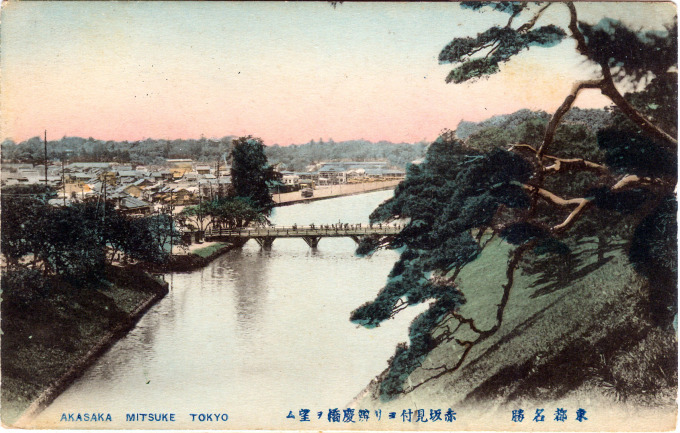
Benkeibashi, with the restaurants and tea houses of Akasaka Mitsuke in the distance, Tokyo, c. 1910.
Into the final years of the Meiji Era (1868-1912), Akasaka Mitsuke was a bargain, raffish version of Shimbashi known both for its good restaurants and its “barley rice girls.” Businessmen, journalists and politicians alike frequented the many establishments that sprouted nearby to Benkeibashi [Strong man bridge] .
Benkeibashi spanned the moat protecting the Fukiage approach into the Edo Castle (and, later, the Imperial Palace) grounds from Akasaka Mitsuke. Fukiage comprised the western area of the castle grounds made into a firebreak after the great Meireki fire of 1657. (A 10-acre section of the grounds was also turned into a garden, now within the grounds of the New Otani hotel.) The bridge as seen in these images was constructed in 1889. Sadly, as with Nihonbashi, an elevated expressway now almost completely obscures from aerial view the present-day Benkeibashi.
A monument to Okubo Toshimichi (sometimes referred to as the “Bismarck of Japan”) was erected in his honor in the Shimizudani Gardens at the end of Benkeibashi, not far from the scene of his murder in 1878. Okubo was a government minister who played an important role in the transition of government during the Restoration. Followers of the Kaga clan murdered Okubo, accusing him of betraying the clan and of not supporting Saigo during the Satsuma Rebellion.


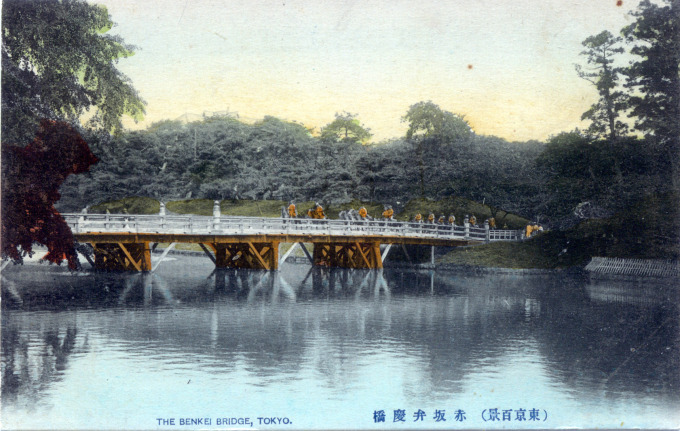
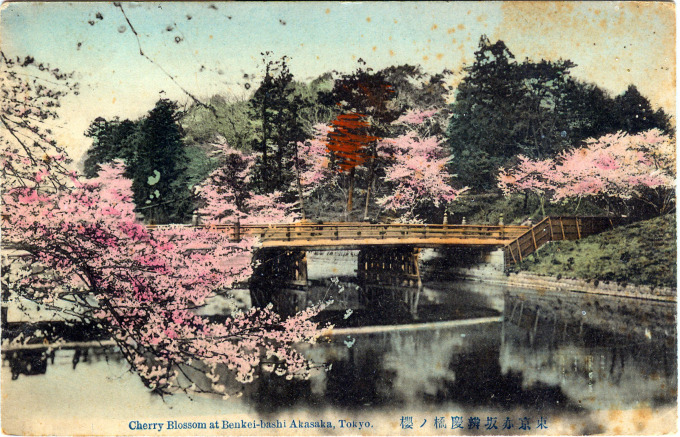
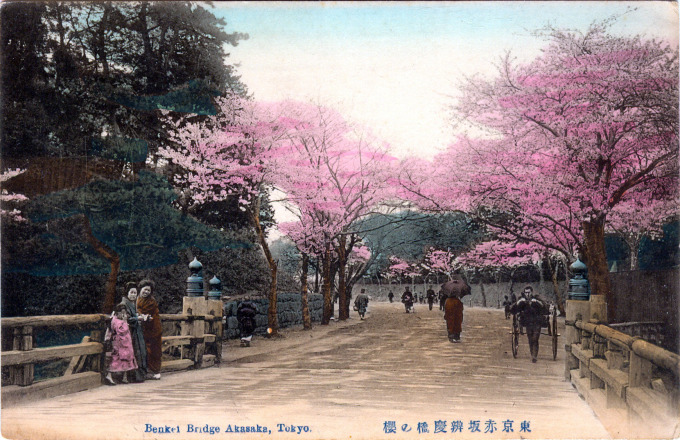

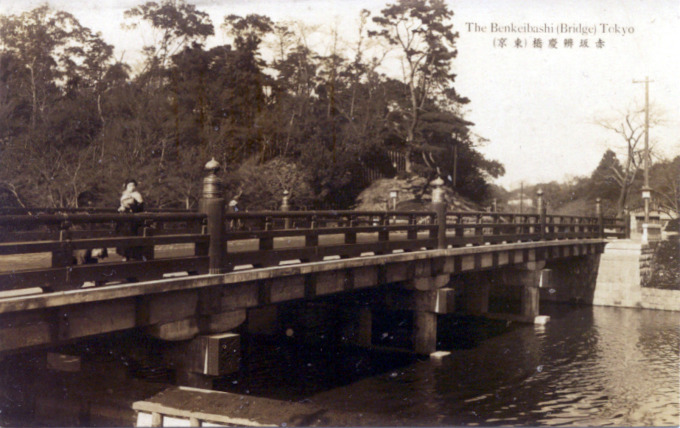
Pingback: Akasaka Mitsuke, c. 1910. | Old Tokyo
Pingback: O-hanami (Cherry Blossom Viewing) | Old Tokyo